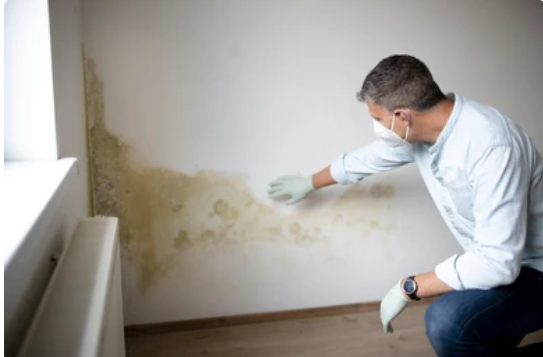There
are such tiny little black spots, yet they can cause health problems and be a
real challenge to remove.

Mould is actually a type of fungus that produce microscope
seeds called spores.
Breathing in those spores can cause health problems for some
people. While most people are unlikely to be affected by mould, the risks are
higher for people who have conditions such as asthma or lung disease, chronic disease
such as diabetes, or low immunity.
- Health problems can include:
- respiratory infections
- irritation to the nose, eyes and throat
- skin rashes
- hypersensitivity pneumonitis
How to manage mould
If you come across mould at work, treat it as a safety
hazard. Identify the risk, assess the risk, control the risk and then review.
Remember to always wear Personal Protective Equipment (PPE) when dealing with
mould.
If you have mould at home, try to remove it as soon as it
appears. Remember, unless you remove the cause of the problem, it will keep
coming back.
Recommended process to remove mould:
- For routine clean-up of mouldy surfaces, use mild detergent
or vinegar diluted in water solution (4 parts vinegar to 1 part water).
- If the mould is not readily removed and the item cannot be
discarded, use diluted bleach solution (250mls of bleach in 4 litres of water
or half a pint of bleach in 1 gallon of water) to clean the surface. When using
bleach, protective equipment is recommended: PVC or nitrate rubber gloves; safety
glasses; and safety shoes. Make sure the area is well-ventilated while you are
cleaning with bleach.
- Ensure the surface is dried completely once cleaned.
- Absorbent materials, such as carpet may need to be
professionally cleaned or replaced if they are contaminated with mould.
How to reduce the risk of mould
Mould loves moisture, so the best way to reduce mould is to keep
your rooms ventilated and dry as much as possible.
1. Maintain proper ventilation
- Turn on exhaust fans, particularly when bathing, showering,
cooking, doing laundry and drying clothes.
- Open windows when weather permits, to improve cross
ventilation.
2. Reduce humidity
- Limit the use of humidifiers.
- Limit the number of fish tanks and indoor plants.
- Limit use of unflued gas heaters
3. Control moisture and dampness
- Repair all water leaks and plumbing problems, for example,
burst water pipes, leaking roof or blocked rain gutters.